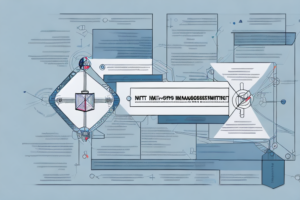What is the framework used for risk assessment?
8 min read
A risk assessment process
As businesses and organizations continue to look for ways to mitigate risks and protect against potential threats, the use of risk assessment frameworks has become increasingly popular. In this article, we will explore the concept of risk assessment frameworks, their importance, and the different types available. We will also discuss best-practices for implementation as well as challenges and solutions. So, let’s get started.
Understanding the concept of risk assessment
Risk assessment is a process of identifying potential risks, analyzing the likelihood and impact of those risks, and developing strategies for managing or mitigating them. The main objective of risk assessment is to ensure that businesses and organizations are well-equipped to deal with any potential risks and are able to minimize the impact on their operations and reputation.
There are several steps involved in the risk assessment process. The first step is to identify potential risks, which can be done through a variety of methods such as reviewing past incidents, conducting surveys, or consulting with experts. Once potential risks have been identified, the next step is to analyze the likelihood and impact of each risk. This involves assessing the probability of the risk occurring and the potential consequences if it does. Finally, strategies for managing or mitigating the risks can be developed, which may include implementing new policies or procedures, investing in new technology, or purchasing insurance.
Different types of risk assessment frameworks
There are various types of risk assessment frameworks available, and each has its own pros and cons. Some of the most common types are:
- Hazard Based Frameworks: These frameworks focus on identifying potential hazards within an organization and promoting practices that reduce the risk of accidents and injuries.
- Risk-Based Frameworks: These frameworks assess the overall risk of an organization and take into account the likelihood and impact of various risks. Based on this assessment, strategies are developed to manage and mitigate those risks.
- Compliance Frameworks: These frameworks help organizations comply with regulations and standards in their specific industry.
- Operational Frameworks: These frameworks focus on the overall effectiveness and efficiency of operations within an organization, taking into account any potential risks that may arise.
It is important for organizations to choose the right type of risk assessment framework that suits their specific needs. For example, a manufacturing company may benefit from a hazard-based framework, while a financial institution may require a risk-based framework to manage financial risks.
Furthermore, risk assessment frameworks should be regularly reviewed and updated to ensure they remain relevant and effective. As new risks emerge, organizations need to adapt their frameworks to address these risks and ensure they are adequately managed.
Common elements of a risk assessment framework
Regardless of the type of risk assessment framework used, they share some common elements. These include:
- Risk Identification: The process of identifying potential risks within an organization.
- Risk Analysis: Assessing the likelihood and impact of identified risks.
- Risk Evaluation: Evaluating the identified risks and determining their priority levels for response.
- Risk Mitigation: Developing and implementing strategies to manage or mitigate the identified risks.
- Monitoring and Review: Continuously monitoring risks and updating the risk assessment framework as appropriate.
One important aspect of a risk assessment framework is the involvement of stakeholders. It is crucial to involve all relevant stakeholders in the risk assessment process, including employees, management, and external partners. This ensures that all potential risks are identified and evaluated from different perspectives.
Another important element of a risk assessment framework is the use of data and analytics. Data-driven risk assessments can provide more accurate and objective insights into potential risks and their impact. This can help organizations make more informed decisions about risk mitigation strategies and prioritize their response efforts.
Importance of using a framework for risk assessment
The use of a risk assessment framework is critical for several reasons. Firstly, it ensures that the risks are identified and analyzed in a systematic manner. This allows organizations to develop appropriate mitigation strategies and allocate resources more effectively. Secondly, it helps optimize the use of resources by focusing on the highest priority risks. Lastly, it promotes transparency and helps organizations remain compliant with regulatory requirements.
Another important benefit of using a risk assessment framework is that it helps organizations to prioritize their risks. By identifying and analyzing risks in a structured way, organizations can determine which risks pose the greatest threat to their operations and reputation. This allows them to allocate resources more effectively and focus on the risks that are most likely to occur and have the greatest impact.
Furthermore, a risk assessment framework can help organizations to identify emerging risks. By regularly reviewing and updating their risk assessments, organizations can stay ahead of potential threats and take proactive measures to mitigate them. This can help to prevent or minimize the impact of risks that may not have been previously identified or considered.
Pros and cons of different risk assessment frameworks
As mentioned above, there are various types of risk assessment frameworks, and each has its own merits and drawbacks. Hazard-based frameworks are effective in preventing accidents and injuries, but they may not capture all the risks that an organization faces. Compliance-based frameworks are essential for meeting regulatory requirements, but may not be tailored to an organization’s specific needs.
Operational frameworks are effective in identifying risks across operational activities, but may not take into account external factors that could impact an organization. Risk-based frameworks are considered the most comprehensive, as they assess all risks and prioritize them based on their potential impact. However, they can also be time-consuming and resource-intensive to implement.
It is important for organizations to carefully consider which risk assessment framework is most appropriate for their specific needs. Factors such as the industry, size of the organization, and level of risk tolerance should all be taken into account. Additionally, it is important to regularly review and update the chosen framework to ensure it remains effective in identifying and managing risks.
How to choose the right framework for your organization’s needs
Choosing the right risk assessment framework for your organization can be a daunting process. However, it is important to evaluate your specific needs and goals when making this decision. Consider the industry-specific risks your organization faces, the size and structure of your organization, and the resources available for implementation.
Another important factor to consider when choosing a risk assessment framework is the level of customization and flexibility it offers. Some frameworks may be more rigid and prescriptive, while others allow for more tailoring to your organization’s unique needs. It is important to assess whether a framework can be adapted to fit your organization’s risk appetite and risk management approach.
Step-by-step guide to using a risk assessment framework
A risk assessment framework can seem like a daunting process, but it can be broken down into the following steps:
- Identify the risks specific to your organization.
- Assess the likelihood and potential impact of each risk.
- Evaluate the risks using a defined set of criteria.
- Develop and implement mitigation strategies.
- Monitor and review the effectiveness of the mitigation strategies.
- Iterate and update the risk assessment framework as needed.
It is important to note that a risk assessment framework is not a one-time process. Risks and their potential impact can change over time, so it is important to regularly review and update the framework. This can be done on a quarterly or annual basis, depending on the nature of the risks and the organization’s risk appetite.
Additionally, involving key stakeholders in the risk assessment process can help ensure that all potential risks are identified and evaluated. This can include employees, customers, suppliers, and other relevant parties. By involving these stakeholders, the organization can gain a more comprehensive understanding of the risks it faces and develop more effective mitigation strategies.
Best practices for implementing a risk assessment framework
There are several best practices that organizations should follow when implementing a risk assessment framework. These include:
- Engaging leadership: It is critical that leadership is engaged and supportive of the risk assessment process.
- Cross-functional collaboration: Risk assessment should be a collaborative process that involves all relevant stakeholders in the organization.
- Clear and concise communication: Communication should be clear and concise to ensure that all stakeholders understand the process and their role in it.
- Data-driven decision-making: Decision making should be based on accurate data and analysis.
- Ongoing monitoring and review: Organizations should continuously monitor and review their risk assessments to ensure that they remain current and effective.
Another important best practice for implementing a risk assessment framework is to ensure that the risk assessment process is tailored to the specific needs and characteristics of the organization. This means that the risk assessment should take into account the organization’s size, industry, and unique risk profile. A one-size-fits-all approach to risk assessment may not be effective in identifying and mitigating the specific risks that an organization faces. Therefore, it is important to customize the risk assessment process to fit the organization’s specific needs.
Examples of successful implementation of a risk assessment framework in various industries
The benefits of a risk assessment framework can be seen in numerous industries. For example, the aviation industry has implemented a comprehensive risk assessment framework to ensure passenger safety. Pharmaceutical companies use risk assessment frameworks to identify and mitigate risks associated with drug development and manufacturing.
Another industry that has successfully implemented a risk assessment framework is the construction industry. Construction companies use risk assessment frameworks to identify potential hazards on construction sites and develop strategies to mitigate those risks. This has led to a significant reduction in accidents and injuries on construction sites.
The financial industry is also a sector that has benefited from the implementation of risk assessment frameworks. Banks and other financial institutions use risk assessment frameworks to identify and manage risks associated with lending, investments, and other financial activities. This has helped to prevent financial crises and protect the interests of both the institutions and their clients.
Challenges and solutions to using a risk assessment framework effectively
Implementing a risk assessment framework can present several challenges. For example, it can be difficult to identify all potential risks, and data gathering and analysis can be time-consuming. Additionally, ensuring stakeholder buy-in can be challenging. To overcome these challenges, organizations should consider focusing on the most critical risks, engaging stakeholders throughout the process, and leveraging technology to streamline data gathering and analysis.
Another challenge that organizations may face when implementing a risk assessment framework is the lack of expertise or knowledge in risk management. This can lead to inaccurate risk assessments and ineffective risk mitigation strategies. To address this challenge, organizations should invest in training and development programs for their employees to enhance their risk management skills and knowledge.
Furthermore, the effectiveness of a risk assessment framework can be limited if it is not regularly reviewed and updated. Risks can change over time, and new risks may emerge, making it essential to continuously monitor and evaluate the framework’s effectiveness. Organizations should establish a regular review process to ensure that the risk assessment framework remains relevant and effective in mitigating potential risks.
Tips for ensuring accuracy and reliability in your risk assessments with a framework
Ensuring accuracy and reliability in a risk assessment framework is critical to its effectiveness. To achieve this, it is essential to define clear criteria for assessing risks, engage subject-matter experts, and verify and validate data.
Conclusion
In conclusion, risk assessment frameworks are an essential tool for organizations looking to mitigate risks and ensure continuity of operations. While selecting the appropriate framework can be daunting, organizations that follow best practices and effectively communicate with stakeholders can achieve successful implementation. Ongoing monitoring and review is crucial to ensuring the framework remains current and effective.



